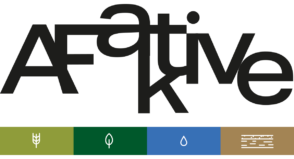A meeting of the AGROfloW project consortium took place on 27th November 2024. The teams of the Institute for Applied Material Flow Management (Trier University of Applied Sciences), of the Saarland University of Applied Sciences (htw saar) and Hydrotec GmbH met at the university campus in Saarbrücken.
The goal of the meeting was to finalise the fine tuning of the measurement campaigns at the agroforestry pilot sites and to discuss the development of the models, which are elaborated by the partners htw Saar and Hydrotec GmbH. Additionally, an initial assessment of the hydrological conditions on the planned agroforestry areas was presented and discussed based on runoff modelling conducted by Hydrotec GmbH.
The pilot sites can be broadly categorised into two groups. The first includes areas facing drought issues, which are exacerbated by exposure to wind. The second includes areas struggling with surface runoff and erosion, particularly during heavy rainfall events. Some sites face both challenges, where prioritization of the main issue can be determined based on severity.
Using the collected data from the measurement campaign on site, the models for wind and evaporation effects as well as surface runoff and erosion will be created and selected modelling processes will be further develop. These models form the basis for optimizing the design of agroforestry systems (AFS) at the pilot sites. The goal is to design the AFS in a way that, within legal frameworks and considering agricultural practices, they reduce drying winds and evaporation, and minimize surface runoff and erosion. A key benefit of these measures is inter alia improved water availability during drought periods, which enhances the resilience of the land and, consequently, the sustainability of agricultural operations.
The close exchange between the project partners during this meeting enabled efficient collaboration to improve data collection and modelling for the optimization of the planned agroforestry systems on the farmers’ fields.
We thank all participants for the productive exchange and look forward to continued collaboration!

Copyright: IfaS
